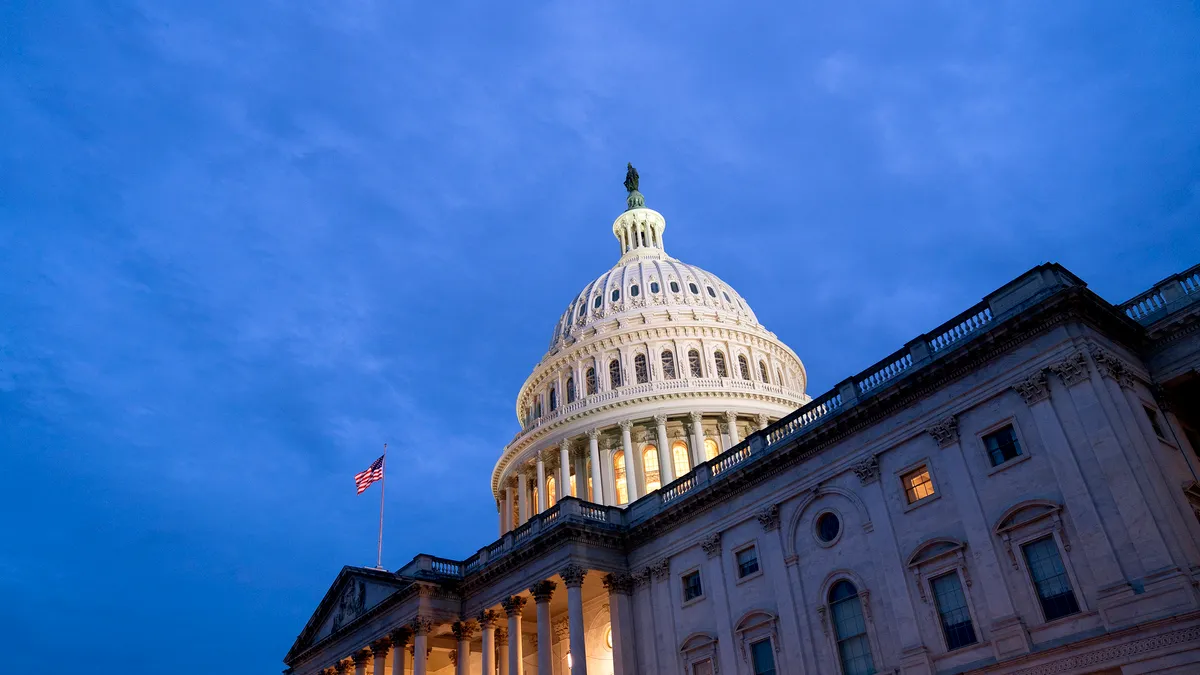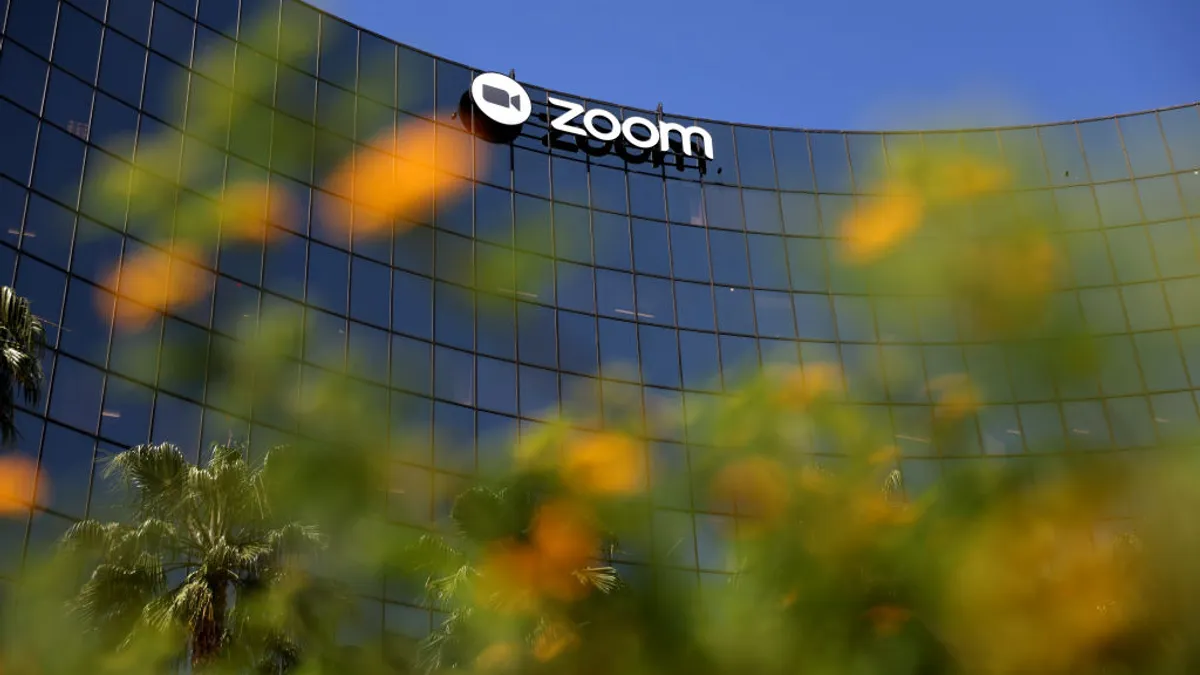Editor’s note: This story is part of the CIO Dive Outlook on 2021, a series on the trends that will shape the industry in 2021. For a look at the business trends affecting other industries, see the Dive Outlook on 2021.
What could a business do with a $1.4 billion IT budget?
Forget just keeping the lights on; that's 1.4 million high-end laptops, annual compensation for roughly 460 Fortune 500 CIOs or more than 2,500 decades of cloud services, depending on business size and provider.
A budget this large is the reality for many federal agencies. The Department of Interior (DOI), a relatively standard small- to mid-sized agency, budgeted $1.4 billion to IT in fiscal year 2020, a fraction (about 6%) of its more than $24 billion total budget.
For comparison, businesses spent between 4.2% and 4.8% of their 2020 revenue on technology, according to Deloitte's 2020 global CIO survey.
Understanding the needs of stakeholders and the agency mission can help government departments navigate massive spending responsibilities, but the big takeaway for business is simple: strategy matters. As the public holds the government accountable for each dollar spent, so will the financial department on the business IT budget.
Businesses face IT spending challenges — such as collaborating with financial departments on the budget or balancing legacy investments with the need to modernize — that can be avoided with a holistic and thorough budget plan similar to the budget pledges agencies make each year.
"IT leaders are really struggling to get complete visibility of their spend as their environments become more complex and hybrid," Cyndi Tackett, VP of Product Marketing at Flexera, told CIO Dive.
And as budgets shift in 2021, strategic spending mindful of the entire IT enterprise builds incremental progress to deliver tangible results.
"IT leaders are really struggling to get complete visibility of their spend as their environments become more complex and hybrid."

Cyndi Tackett
VP of Product Marketing at Flexera
While IT departments tackle the big projects, from cloud migrations to automation, an agile spending mindset focused on incremental moves builds enterprisewide progress, according to Waters Corporation CIO and former White House CIO Brook Colangelo in an interview with CIO Dive in October 2020.
"Understand, first, what's in the budget and so as you do that and you develop your strategic plan, you can align those things and align the resources that you need to drive the change that you want to make for your tenure," Colangelo said as a key takeaway from government that applies to the private sector.
In other words, IT departments with budgets of all sizes can focus on the impact of IT dollars spent now to drive value as quickly as possible.
How a fed IT budget stacks up to enterprise
The federal government at-large spent $90 billion on IT in FY2019, according to the Government Accountability Office. A small portion of the total government budget, the figure still looms as a massive investment.
To better understand how the government spends its IT dollars, a closer look at DOI provides a comprehensible, although narrow, look at a government tech budget.
In FY2020, DOI spent 62% of its $1.4 billion IT budget on so-called standard IT infrastructure projects, or just keeping the lights on. Only 20% of total spending was on major IT projects and 17% on non-major IT.
DOI spent a majority of its IT budget on standard infrastructure
Major IT projects include endeavors with special importance to the mission or function of an agency. For example, DOI spent $58.5 million upgrading its Financial and Business Management System with an enterprise solution to reduce burden. These projects tend to involve a major lift, transformation or upgrade of an agency asset.
In FY2021, DOI's budget is expected to look about the same; the agency's IT budget will again total $1.4 billion. The agency is pursuing more shared services opportunities and "an aggressive enterprisewide approach to support IT modernization," according to its FY2021 budget in brief. DOI declined to comment on its IT spend for this story.
While the dollar amount will vary from business to business, the private sector has a larger portion of its budget to spend on IT.
But IT budgets are in flux. While a Gartner analysis predicts IT services budgets to grow 4% in 2021 after a 5.4% spending dip in 2020, Forrester, on the contrary, predicts U.S. tech investment to fall 1.5% in 2021 after years of acceleration.
Put simply, IT spend varies based on how each sector reacted to the pandemic, according to Tackett. Those hit hard by the pandemic may slash IT spending to keep employees on the payroll. While other companies, such as those in the tech sector that fared relatively well in 2020, will likely be motivated to improve their presence in the digital age and up IT budgets.
"Just getting back to normalcy for some of these companies is more of a priority than innovation," said Tackett.
The balance hangs in what's best for business recovery — and deciding what to upgrade versus what legacy tech can wait.
For example, 62% of respondents in a Flexera survey of 474 IT executives and high-level managers plan to reduce their use of data centers over the next 24 months. But frequently shifting away from data centers requires an investment in modernization. Cloud spend, at 30% of total IT spend, just barely surpasses on-premises software spend, which totaled 24%.
In that sense, planning ahead relies on deciding which expenditure will benefit the business's bottom line, but first, IT departments are still adapting to pandemic-era shifts.
Pandemic IT spend changes aren't over yet
Across sectors, organizations lean into modernization and digital transformation with incremental IT budget increases during the shift to remote everything.
At large, 2021 will see pragmatism reflected in IT budgeting decisions. And government agencies know the importance of practicality as millions of constituents lean on reliable services — not shiny gadgets — to access services.
IT spend in 2021 will have an increased focus on the hardware and software supporting a distributed workforce, cloud-based digital transformation and managed services, according to Ryan Denehy, CEO at Electric.
"With the increasing need to do more with less going into 2021, I believe most will focus budget on covering their bases in a more practical, foundational way," Denehy said.
Federal agencies, for example, received a small budget boost in 2020 to overcome pandemic hurdles. The Coronavirus Aid, Relief, and Economic Security (CARES) Act, passed in March, allocated $756 million directly to DOI programs to mitigate pandemic effects.
The relief money supported DOI's quick shift to telework as the number of employees working from home tripled. Of the new funds, $522 million went to DOI's Bureau of Indian Affairs and Bureau of Indian Education specifically directed toward COVID-19 response, such as improved teleworking and IT.
DOI migrated to Microsoft Office 365 and increased virtual private network licenses to adapt to the change with pandemic relief funds to meet immediate remote work needs, the Office of the CIO told the Inspector General (IG).
"Businesses are focusing less on emerging technologies and instead, on ensuring a strong IT foundation to support productivity and business continuity."

Ryan Denehy
CEO at Electric
Businesses, conversely, were often stuck reprioritizing existing resources to support IT during the pandemic.
"You can’t talk about IT spending trends without first recognizing how the pandemic has impacted the nature of work," said Denehy. "Businesses are focusing less on emerging technologies and instead, on ensuring a strong IT foundation to support productivity and business continuity."
Shuffling priorities to meet the demand of digital business and remote work, "the COVID-19 crisis prompted unplanned spending among many organizations to meet those remote enablement needs in the first half of 2020," according to SWZD's The 2021 State of IT.
Of the 1,073 IT buyers from organizations across North America and Europe that responded to SWZD's survey, 44% have already or plan to accelerate digital transformation and 36% plan to improve IT operations and systems performance in 2021.
Digital transformation leads as the top IT priority for business
Digital transformation, cybersecurity and cloud remain the top business IT priorities from 2020 to 2021, according to the Flexera report, indicating that the pandemic stalled progress, according to Tackett.
"They haven't changed because there might not have been as much progress towards those goals," said Tackett. What did change, however, was a renewed focus on cost savings. In 2020, 9% of respondents to the Flexera survey listed it as a top priority, but it jumped to 27% in 2021.
This year, 49% of respondents to the Flexera survey plan to increase IT spend and 32% plan to decrease. The large proportion of spending increase, or at least plateau, matches analyst predictions as companies realize the value of IT in the changing digital landscape.
"We’re not out of the woods by any stretch of the imagination, and it’s likely 2021 will bring more uncertainty that drives business and budget decisions," Denehy said. "However, what we do know is that IT plays an undeniable role in enabling the remote workforce and can’t be neglected."






















